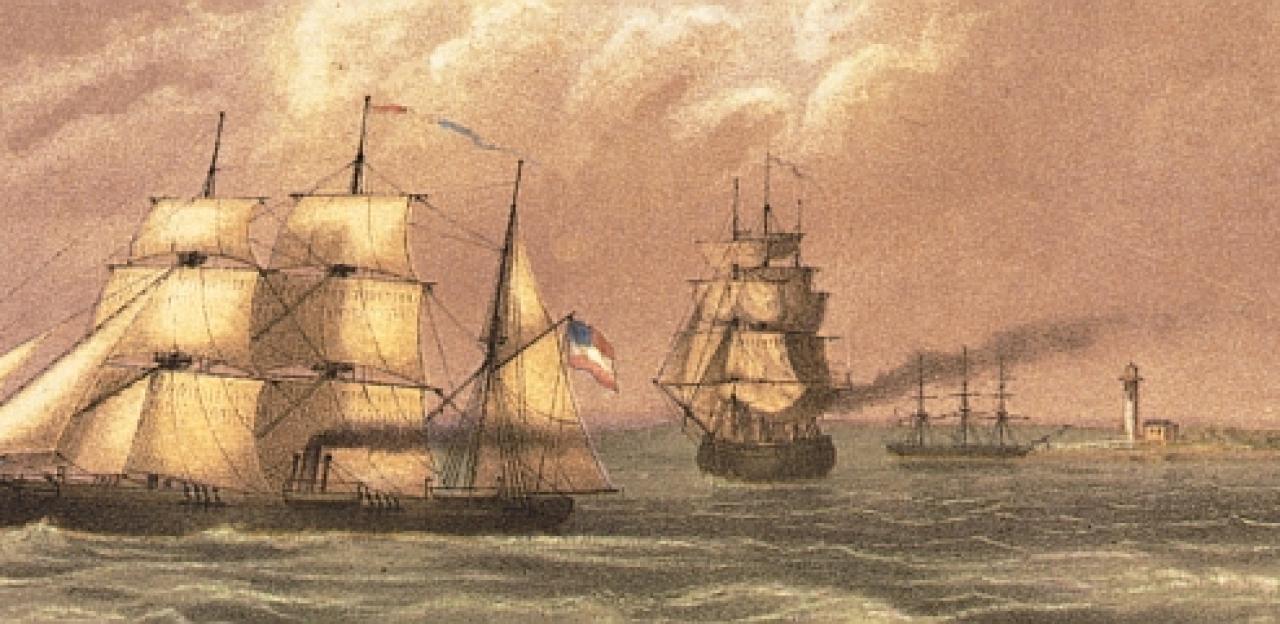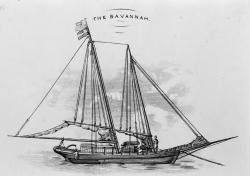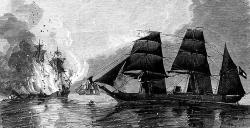Commerce Raiders

As the Union Navy gathered its strength to impose a blockade on the South, Confederate leaders developed their own plans for the war at sea. The North had more ships, cannons, naval officers, and industrial facilities, leaving the Rebels with no realistic hope of obtaining control of the Atlantic. The Confederates therefore developed a two-part naval strategy: Firstly, they would defend their key ports and rivers with forts, gunboat flotillas, and eventually ironclads. Secondly, they would commission privateers and Confederate naval vessels to attack Union commerce at sea.

The concept of commerce raiding was centuries old at least. Americans had even achieved significant successes raiding British commerce in the Revolutionary War and the War of 1812. In particular, naval officers such as John Paul Jones and David Porter (the father of Adm. David D. Porter and guardian of Adm. David G. Farragut) became famous for their commerce raiding exploits.
The Confederates reasoned that they would be outgunned against the Union Navy, because Northern steel mills and shipyards could produce a larger and better-equipped fleet. Consequently, the Confederate Navy focused on building "cruisers" that were fast enough to avoid Union warships, but still carried enough firepower to easily capture merchant ships, which were usually slower and unarmed. Because the South lacked major shipbuilding facilities and expertise, the most effective of these raiders were secretly built in Great Britain. Britain was a neutral power, however, so this arrangement was technically illegal, and the raiders had to be built in secret.

President Jefferson Davis also issued “letters of marque” to enterprising civilian captains, authorizing them to outfit private vessels to raid Union shipping. These “privateers” were not paid by the government – instead, they kept whatever ships and cargo they seized, and divided the profits between the owner and crew. Privateer vessels were generally smaller than the Navy's cruisers, but had the same needs: namely, the speed to outrun warships, and enough armament to capture undefended merchantmen. In theory, privateers rarely fought battles and had the possibility of making an immense profit, so privateering was an appealing profession in the early war.
The Civil War was different from previous US wars, however, because the Union blockade was more effective. With fewer ports to patrol, the Federal Navy could keep a stronger presence at the handful of open Southern ports. The blockade consequently prevented Confederates from making it home to sell their “prizes” and captured cargo, refuel, undergo repairs, or drop off prisoners. Many Rebel captains used foreign ports for their needs, with limited success. Few external powers were willing to take sides in the war, and many strictly limited the services available to Confederate raiders in their ports – only allowing them to make vital repairs or purchase necessary supplies.
As the risks of selling captured ships mounted, the privateering became less common. Privateers were fundamentally motivated by profit, and the difficulty in selling their prizes drove many would-privateers to other business ventures, such as blockade-running.

Cruisers, on the other hand, could partially avoid this logistical problem. Their officers and crew earned wages, so they burned most of their prizes at sea along with any cargo that the crew did not need for themselves. Union passengers and crew were generally taken prisoner, and either dropped off in a neutral ship or port. Furthermore, the most effective raiding vessels, such Captain Raphael Semmes' CSS Alabama, had a full set of sails in addition to a steam engine, enabling the ships to stay at sea longer without stopping to take on more coal.

Today, historians debate the effectiveness of Confederate commerce raiders. Most agree that privateering had little effect on the war effort. Although some of cruisers were immensely successful, their direct effect on the Union war effort was limited by the fact that there were rarely more than a handful of raiders at sea at any given time. They did, however, dramatically increase Northern insurance premiums, cause many merchants to ship goods in foreign ships, and pull Union warships away from blockade duty. Finally, it is worth noting that Rebel commerce raiders sailed all over the globe, and helped make the world aware of the Confederacy and the American Civil War.
Additional Resources:
Symonds, Craig L. The Civil War at Sea. Oxford: Oxford University Press, 2009.



